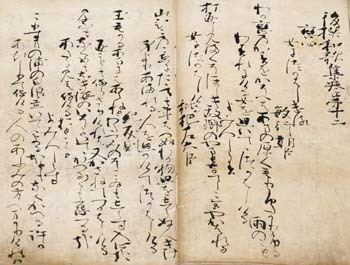Date written 951 AD Followed by Shūi Wakashū | Preceded by Kokin Wakashū | |
 | ||
Editors Minamoto no Shitagō, Ōnakatomi no Yoshinobu, Kiyohara no Motosuke, Sakanoue no Mochiki, Ki no Tokibumi Similar Kokin Wakashū, Shin Kokin Wakashū, Tales of Ise, Ogura Hyakunin Isshu, Man'yōshū | ||
The Gosen Wakashū (後撰和歌集, Later Collection of Japanese Poems), often abbreviated as Gosenshū ("Later Collection"), is an imperial anthology of Japanese waka compiled in 951 at the behest of Emperor Murakami by the Five Men of the Pear Chamber: Ōnakatomi no Yoshinobu (922-991), Kiyohara no Motosuke (908-990), Minamoto no Shitagō (911-983), Ki no Tokibumi (flourished ~950), and Sakanoue no Mochiki (flourished ~950). It consists of twenty volumes containing 1,426 poems.
Its name "Later Collection" comes from the fact that the anthology is made up of primarily poems which were considered for inclusion in the Kokin Wakashū but which were ultimately rejected. Most of those poems were sub-par, and so this anthology is not regarded as being of especial merit, but is interesting because of the lengthy prose fictional settings (as narrated in headnotes and footnotes) for the poems.
